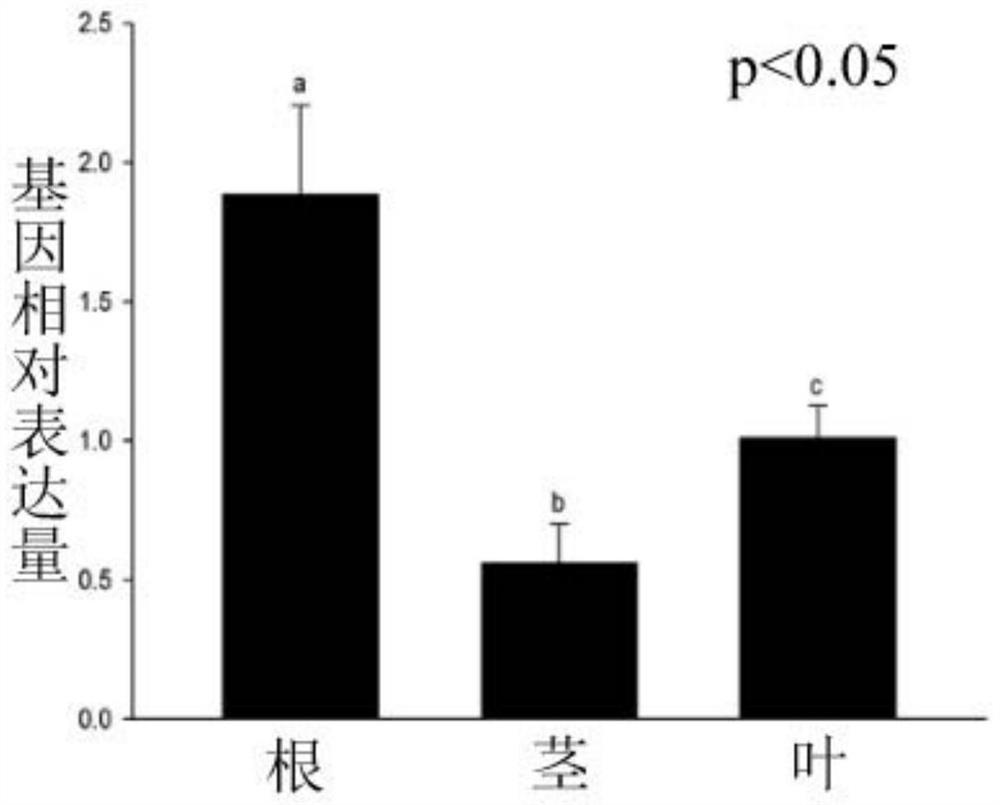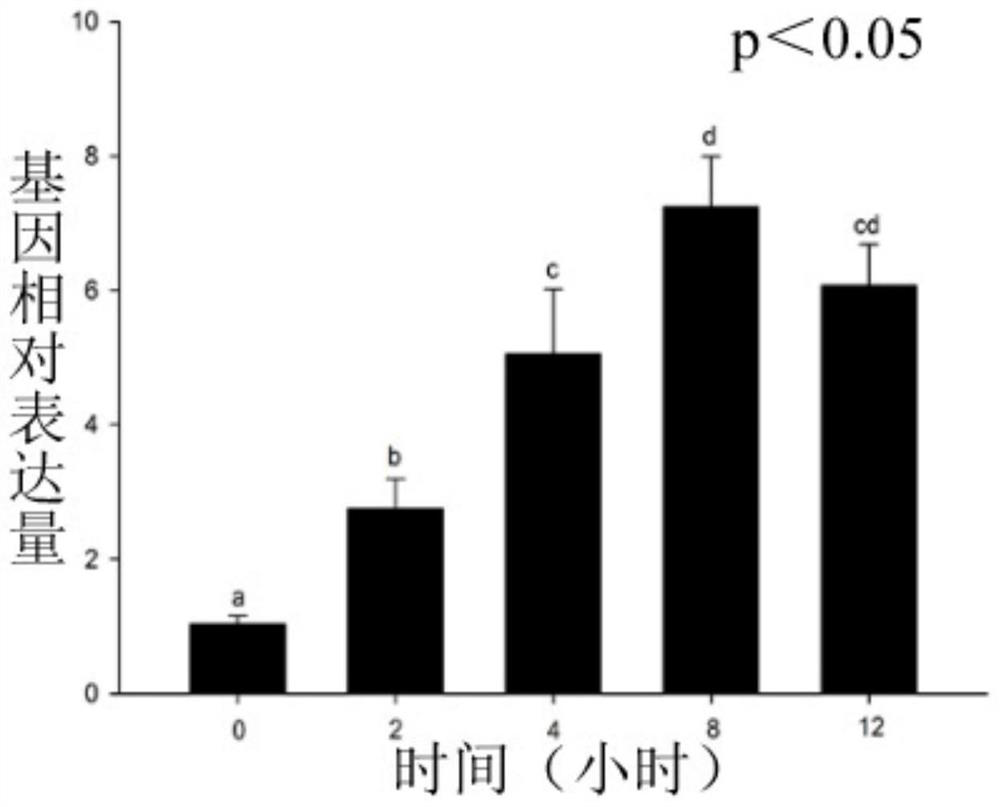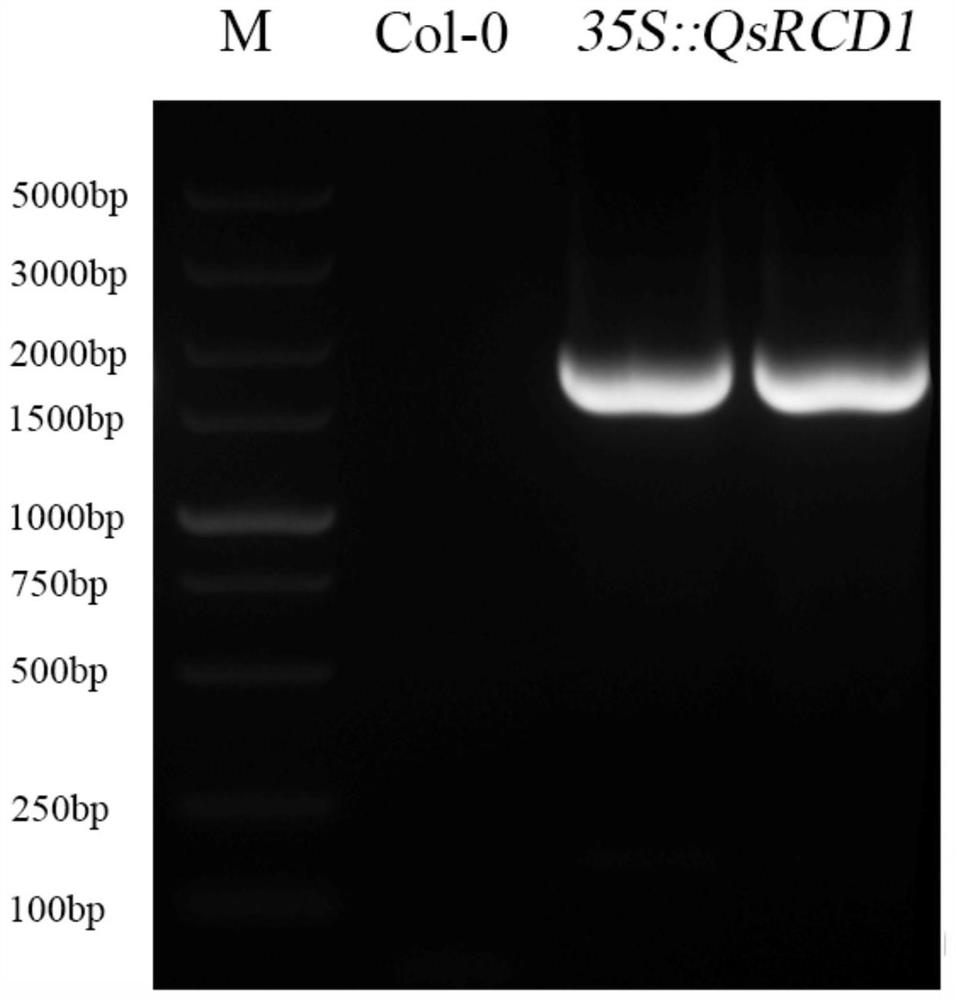Quercus variabilis QsSRO1 gene and application of encoding protein of Quercus variabilis QsSRO1 gene in plant stress resistance
A technology of plant stress resistance and cork oak, which is applied in the field of genetic engineering, can solve the problems of slow breeding process, complicated process, and separation of traits, and achieve the effects of reducing damage, strong tolerance, and improving stress resistance
- Summary
- Abstract
- Description
- Claims
- Application Information
AI Technical Summary
Problems solved by technology
Method used
Image
Examples
Embodiment 1
[0021] Example 1: Quercus cork QsSRO1 gene and its obtaining method
[0022] 1. How to obtain QsSRO1 of Quercus cork
[0023] Extract the RNA of Quercus cork and use TaKaRa PrimeScriptTM as the RNA template RT The kit is reverse transcribed into cDNA by the reverse transcription kit method. Then, the cDNA was used as a reaction template for amplifying the target gene sequence, and 5'-ATGGCGAATCTACCCCAATCGC-3' and 5'-TCAGTTTCCGGGCTCTGGTTTC-3' were used as primers for PCR amplification to obtain the CDS sequence of the QsSRO1 gene.
[0024] 2. Analysis of tissue expression of QsSRO1 gene by real-time quantitative PCR
[0025] The RNA was extracted from the roots, stems and flowers of Quercus cork, and cDNA was synthesized by reverse transcription. Then, the cDNAs of the above tissues were used as templates, and 5'-AGACGGGACGAGGGTTGT-3' and 5'-TGGATGATGTGGGCTTGG-3' were used as primers for PCR amplification. To detect the expression of QsSRO1 gene in different tissues of Querc...
Embodiment 2
[0028] Example 2: Application of QsSRO1 gene in improving plant stress resistance
[0029] 1. Construction of Arabidopsis transfected with QsSRO1
[0030] To obtain the QsSRO1 gene of Quercus cork, the following primer pairs were prepared:
[0031] Primer 1: 5'-ATGGCGAATCTACCCCAATCGC-3';
[0032] Primer 2: 5'-TCAGTTTCCGGGCTCTGGTTTC-3'.
[0033] Using the cDNA of Quercus cork as a template, PCR amplification was carried out using the above primers 1 and 2 to obtain a PCR product with a size of 1755 bp, which was sequenced. The obtained PCR product is the QsSRO1 gene of Quercus cork, and the nucleotide sequence shown by the sequencing result is shown in SEQ ID NO.1, which can encode the QsSRO1 protein whose amino acid sequence is shown in SEQ ID NO.2. Bioinformatics analysis showed that the protein encoded by the QsSRO1 gene contained 585 amino acid residues, with a relative molecular mass of 66.04kDa and a theoretical isoelectric point of 5.85. The QsSRO1 protein contains a...
PUM
| Property | Measurement | Unit |
|---|---|---|
| Relative molecular mass | aaaaa | aaaaa |
Abstract
Description
Claims
Application Information
 Login to View More
Login to View More - R&D
- Intellectual Property
- Life Sciences
- Materials
- Tech Scout
- Unparalleled Data Quality
- Higher Quality Content
- 60% Fewer Hallucinations
Browse by: Latest US Patents, China's latest patents, Technical Efficacy Thesaurus, Application Domain, Technology Topic, Popular Technical Reports.
© 2025 PatSnap. All rights reserved.Legal|Privacy policy|Modern Slavery Act Transparency Statement|Sitemap|About US| Contact US: help@patsnap.com



